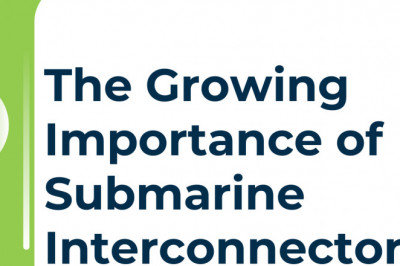views

Performance appraisals are vital to keeping an employee accountable and motivated. Research shows that most employees would like performance appraisals every three months, with feedback given every six months.
A performance appraisal is intended to give employees critical feedback about their work and where they can improve. It is an objective measure of how much their supervisor and the company value their work.
However, unfortunately, conventional performance appraisal methods are often impractical in today's modern workforce, making it difficult to conduct one that will benefit both the employee receiving the feedback and their supervisor providing it. So, what's the best way to evaluate your employees?
The answer might not be as simple as you think. Investing in employee development and career progression can reap great rewards. However, many companies are still using the same out-of-date methods of appraisal that don't provide the same measurable outcomes as more modern ones.
That's why several factors come into play, such as your company's industry type, the position's complexity, and how often you perform the performance appraisal process.
No matter what method you choose, it's important to ensure it has practicality and ease of implementation, fairness, objectivity, and elements of realism that aligns with expectations from managers and employees.
This guide will look at some of the most effective types of performance appraisal to help you get the best return on your investment in employee development.
What is the Practical Performance Appraisal Method?
It is a process whereby managers use information and data to measure each employee’s performance against the company's criteria or standards. This process helps in raising employees to higher productivity levels and job skill development.
This is done by assessing employee competencies against agreed-upon objectives and identifying ways to enhance employee strengths and knowledge areas that need improvement. This appraisal also sets realistic goals for future growth and targets ensuring these goals should be achieved over time, also, ensuring employees are working toward collective advancement and future success.
Following are the six processes you can choose from to meet your needs.
1) Rater-Specific Feedback
Rater Specific Feedback is one of the best performance appraisal methods because it considers the opinions of both the rater and recipient. Employees can provide feedback on how their coworkers and supervisors assess their work, providing more information on how they are seen in their current workplace.
Evaluating rater-specific feedback is beneficial because it allows employees to see themselves through others' eyes. Employees will be able to learn about what strengths they have or what weaknesses they need to improve upon.
They also gain a better understanding of how they are perceived by their managers, which can help employees learn what behaviors will help them succeed and what behaviors need to be avoided; which helps create a mutually beneficial relationship between employees and employers.
2) 360 Degree Reviews
A 360 Degree Review is a performance appraisal process where feedback from multiple sources is gathered on an employee's performance. As a result, it provides a more accurate representation of the employee's work, strengths and weaknesses, and opportunities for development than a traditional review by one person.
This practice benefits not only the individual being reviewed but also the organization. Organizations can get feedback from those who are close to the employee that may be able to provide insights that one person cannot give.
Feedback can be collected through interviews with people who have interacted with the employee at work or through online surveys or questionnaires that may be sent out after a particular event or project has been completed.
This 360-degree review process of employee appraisal can help employees understand the type of leadership style they need to adapt to excel in the workplace and improve their overall productivity. It also assists companies in gaining valuable insight into how they can better meet employees' needs while improving organizational outcomes.
3) Assessment Center Method
The Assessment Center Method, often just called an assessment center, is an employee appraisal method where people who know the employee's skills and experience observe that employee in specific environments and rate their performance against predetermined standards.
After observing the worker in different scenarios, each individual will write a report about how they think the worker did. They will then take turns presenting their thoughts to other panel members and whoever designed the test.
From there, they discuss what they liked or didn't like about what they saw and finally give an overall rating on a scale that decides whether or not the person passed.
Mostly, the larger companies use these types of appraisals as they can be difficult to implement with small teams but still have many benefits, such as providing more insight into what skills need improvement, better communication between management and workers, and fairer evaluation of the performance.
4) Peer views
Peer reviews are a process where employees formally evaluate one another's work and performance. Peer reviews are important because they allow your employees to feel heard, appreciated, and valued in the company. It's a safe space where they can review their work environment and offer candid feedback on what they want to see change or improve upon.
A peer review is often perceived as less stressful than an evaluation with a manager, as there is no fear of repercussions or punishment if someone has negative feedback.
In addition, the opinions given by peers hold the weight that cannot be ignored. Feedback from a colleague is unbiased and comes from a perspective that may not have been considered previously; therefore, it can be more valuable than other appraisal methods.
Some people believe that peer reviews should only occur at regular intervals so that there is never any backlash when people are not performing well or receiving poor evaluations from supervisors. Some companies have successfully implemented annual peer reviews and monthly check-ins between managers and their direct reports.
These policies aim to ensure all employees get regular feedback while also having the opportunity to grow with input from others who understand their situation. For this reason, it is recommended that peer reviews should be conducted every quarter at a minimum for the betterment of the employee.
5) Checklist method
A checklist method is one way to get a more accurate read on your team members. This will allow you to objectively score your employees by putting them in checklists with descriptions of the skill sets they need to possess and whether or not they have those skill sets.
The checklist method lets managers objectively measure their employees' performance based on key competencies. Managers can use this information to determine areas where the training process needs improvement, how much of a raise an employee deserves, and what kinds of projects are best suited for that particular employee's strengths.
With such insights from each employee, it is easier to develop an appropriate development plan and allocate tasks accordingly so that everyone has room to grow and develop according to their unique talents.
6) Business Intelligence Tools
Utilizing new technology is a great way to process appraisals and keep employees accountable. Employee monitoring software, webcams, and time tracking programs are some available options to help you monitor employee productivity.
These tools help companies measure whether or not their policies successfully create a happy and productive environment for employees. Organizations will find it easier to measure performance without relying on subjective opinions or multiple conflicting data sources because these systems can provide a 360-degree view of what employees do all day long.
Some even come with reviews, analytics, insights, and KPIs that allow managers to look inside the most important aspects of their team's work. The process becomes more objective as managers no longer have to guess how good an employee might be doing; they have concrete proof from which they can base their decisions for the employee about their progress and goals for the future.
Final Thoughts
One of the best parts about an appraisal process is that it can be tailored to how your company wants to do things. The process of performance appraisal takes hard work, but it is worth the effort.
It ensures that everyone in your company gets credit where credit is due and constructive feedback to improve their work and skills. I hope these six types of performance appraisal methods will help you decide which one is right for you and your team for this year.
That's all for today.
Thanks for reading!
Have any thoughts or questions?
Let us know in the comment section below. We would love to hear from you!












